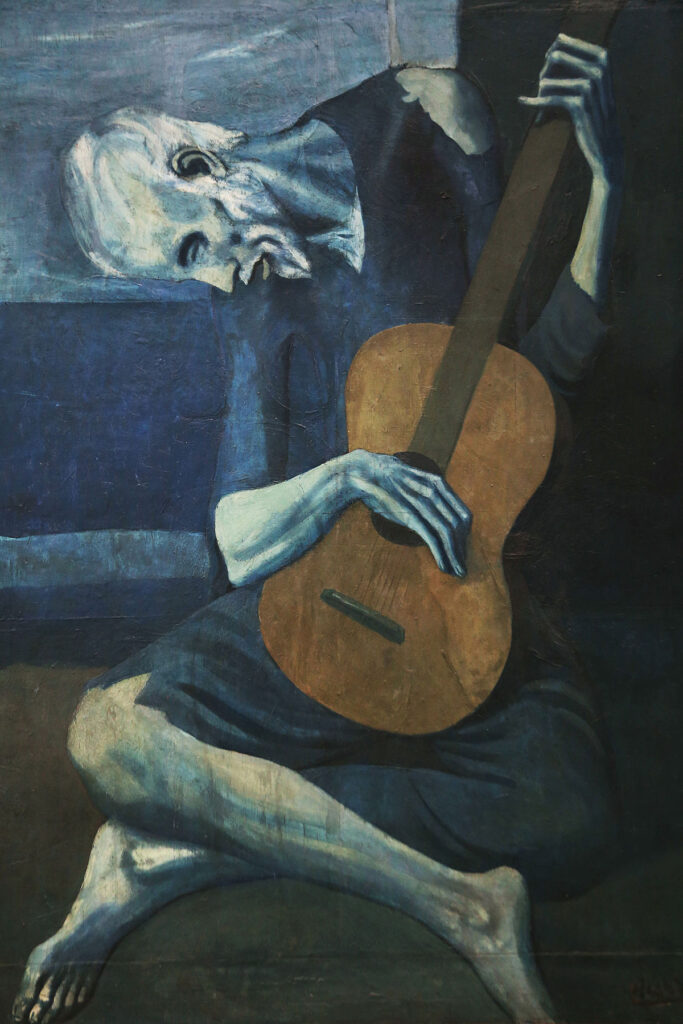
One name in the history of the 20th century art stands out over all others: Pablo Picasso (1881-1973). As painter, graphic artist and sculptor, he displayed an inventive enterprise and innovative bravado that always kept him one step ahead of his contemporaries.
As one of them, the painter Max Ernst, ruefully put it:
“No one can touch Picasso. He is genius incarnate.”

Portrait photograph of Pablo Picasso, in front of his painting The Aficionado (Kunstmuseum Basel) at Villa les Clochettes, Sorgues, France, summer 1912
Who Was Pablo Picasso?
If you think about modern art, Picasso is probably the first name that pops into your head. Art today wouldn’t be the same without him!
Pablo Picasso had a very long and interesting life. He lived through two world wars, the invention of electricity, telephones, radio and TV, movies, automobiles, and airplanes. As the world changed, he was able to change with it.
Picasso made all kinds of art and plenty of it. He worked hard every day for more than eighty years. Some people say he created 50,000 pieces of art!
He made paintings, posters, sculptures in stone and metal, ceramics, drawings, collages, prints, poetry, theater sets, costumes, and more. Picasso kept thinking of new ideas. He was creative and skilled, but as soon as he mastered a certain style, he’d move on. As a result, the way he painted changed more than any other great artist.
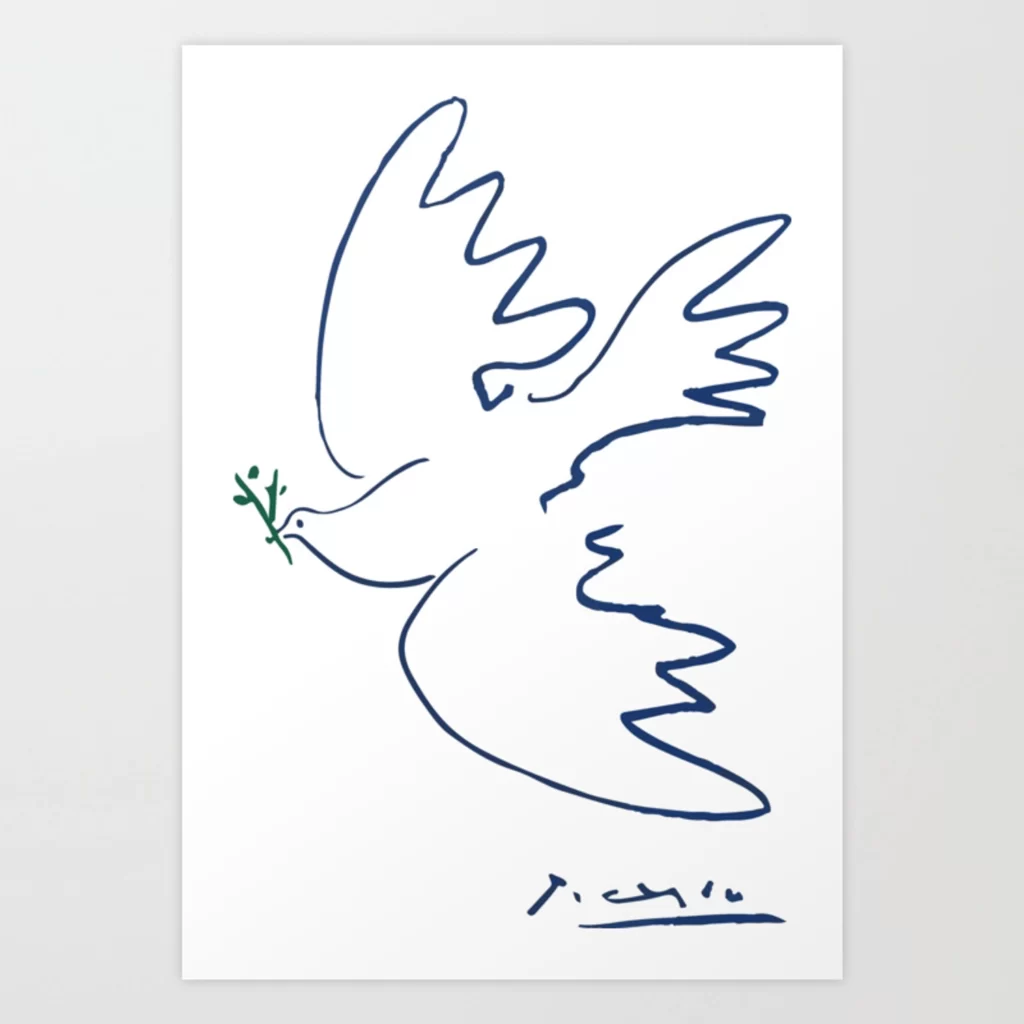
Unlike many artists, Picasso was successful and became famous quite quickly. He always knew how to attract attention. At nine years old, Picasso was selling his drawings. By the time he died at age ninety-one, he was the richest artist in history.
Through his art, Picasso sent powerful messages about politics, society, peace, and love. Because of Picasso, the dove is considered a symbol of peace

And his most famous painting, Guernica , shows the horror and brutality of war.
Picasso’s art could be serious or playful, childlike or realistic, colorful or dark, simple or complex. When he was a child, he could draw as well as a talented grown-up. But the older he got, the more he wanted to make art like a child.
Every child is an artist. The problem is how to remain an artist once he grows up.
Pablo Picasso
The Blue Period
As the story goes, when Carles Casagemas, Pablo’s good friend returned to Paris all broken hearted and at his wits’ end: First he tried to shoot his old girlfriend and then he shot himself and died.
This came as a huge shock to Pablo. He may have also felt guilty about leaving his friend in such bad shape. Carles’s death affected Picasso’s painting. He painted two dark funeral scenes and two death portraits of Carles. Then he began painting with the color blue.
Pablo said,
“It was thinking of Casagemas that made me start painting in blue.”
He did a self-portrait in 1901 that was mostly in blues. It made him look very sad. Later, this time became known as Picasso’s Blue Period .
From 1901 to 1904, Pablo moved back and forth between Barcelona and Paris. He lived in cheap hotel rooms and run-down apartments. Pablo shared one apartment with Max Jacob, a poet. They could only afford one bed, so Pablo slept in it during the day, and Max slept in it at night. Pablo worked at night, a habit that continued for the rest of his life.
Because he often couldn’t afford to buy canvases and paints, Pablo did lots of drawings.
His subjects were beggars, blind people, lonely people, and prisoners. Pablo cared about these people. For models, he visited a women’s prison in Paris.

All his life, Pablo loved painting women .
Life in Paris
What made Pablo snap out of his Blue Period?
Moving back to Paris—this time for good—was one cause. Lively Paris worked its magic on Pablo. He became happier. He started doing colorful paintings of jugglers and acrobats in a traveling circus. They were all outsiders to society, just like the people he had painted in his Blue Period.
The other reason that his Blue Period ended was Pablo had a new girlfriend. She was a beautiful artist named Fernande Olivier. His happiness showed in his paintings. This time in Pablo’s life is sometimes called the Rose Period , but his paintings had many colors. Not just pinks.
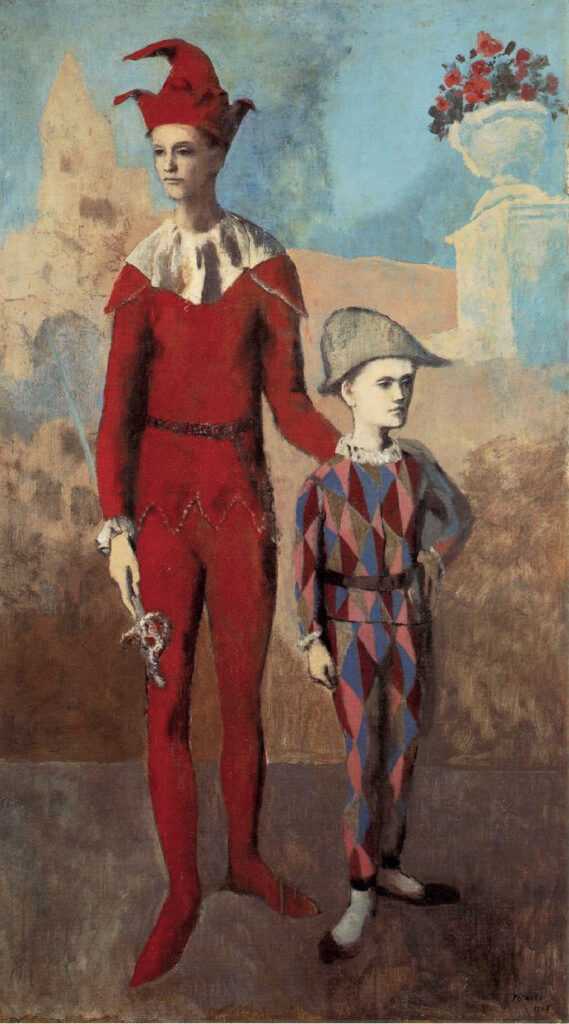
He met a rich American woman named Gertrude Stein and her brother Leo. Gertrude was a poet. She had written the famous line, “Rose is a rose is a rose.”
The famous writer and expatriate Gertrude Stein was among the first Americans to respond enthusiastically to European avant-garde art. She held weekly salons in her Paris apartment populated by European and American artists and writers.
For Picasso, Stein’s early patronage and friendship was critical to his success. He painted this portrait of her between 1905 and 1906 at the end of his so-called “Rose Period.”
He reduces her body to simple masses—a foreshadowing of his adoption of Cubism—and portrays her face like a mask with heavy lidded eyes, reflecting his recent encounter with Iberian sculpture.

Pablo met the painter Henri Matisse there. Pablo thought Matisse was the greatest painter of the time.
“All things considered, there is only Matisse,”
Even though they were competitors, they became lifelong friends.
After working on a portrait of Gertrude Stein, Pablo realized that he didn’t have to paint exactly what he saw. He could paint what he imagined. This led to a turning point for Pablo. It was a turning point in the history of modern art !

In 1907, Pablo painted the biggest painting he had ever done: eight feet tall and eight feet wide. It showed five women, one whose head looked like it was on backward. The painting was called Les Demoiselles D’Avignon .
Everyone hated it. One critic said it was “the work of a madman.” Pablo put it away and didn’t show it again for nine years. It was fun to get the attention, but his feelings were hurt.
Today it has been called the first modern twentieth century painting. Picasso had found a new way of seeing.
There was one person who really liked Pablo’s experimental style. He was an art gallery owner named D. H. Kahnweiler. He became Pablo’s art dealer and close friend.
Cubism
Of all the important artwork that Pablo created in his life, it was cubism that made him famous. At first people were shocked by cubism .
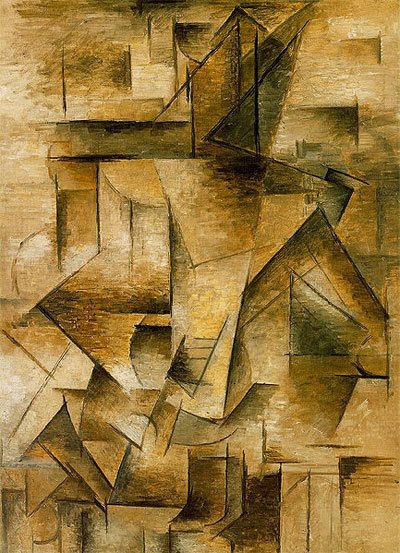
“I knew we were painting strange things, but the world seemed a strange place to us.
Pablo Picasso
Braque and Picasso did still life paintings, landscapes, and portraits. They both used only a few colors and broke up objects in the paintings into cubes and geometric shapes. They were trying to paint their subjects from all sides at once. Pablo said, “I paint objects as I think them, not as I see them.” Together, they were inventing a new style~ Cubism.
By 1925, Picasso became interested in the surrealist movement in art and literature. Surrealist painting was a way of expressing the unconscious mind.

Many of Picasso’s surrealistic drawings and etchings were about bullfighting. He also made many images of the Minotaur, an imaginary creature that was half man and half bull. Some art critics think that Picasso liked to think of himself as a Minotaur!
Some artists work on one idea and in one style. But Picasso changed all the time. Picasso’s paintings reflected what was going on in his personal life as well as what was happening in the outside world.
In 1936 the Spanish Civil War broke out. Picasso was living in Paris, yet he was deeply affected by the war in Spain. He was a Spaniard, after all.
In Spain, a Republican government had been elected. But it was overthrown by General Francisco Franco and his forces. Franco was a dictator and ruled Spain until his death in 1975. Because of Franco, Picasso never returned to his native country.

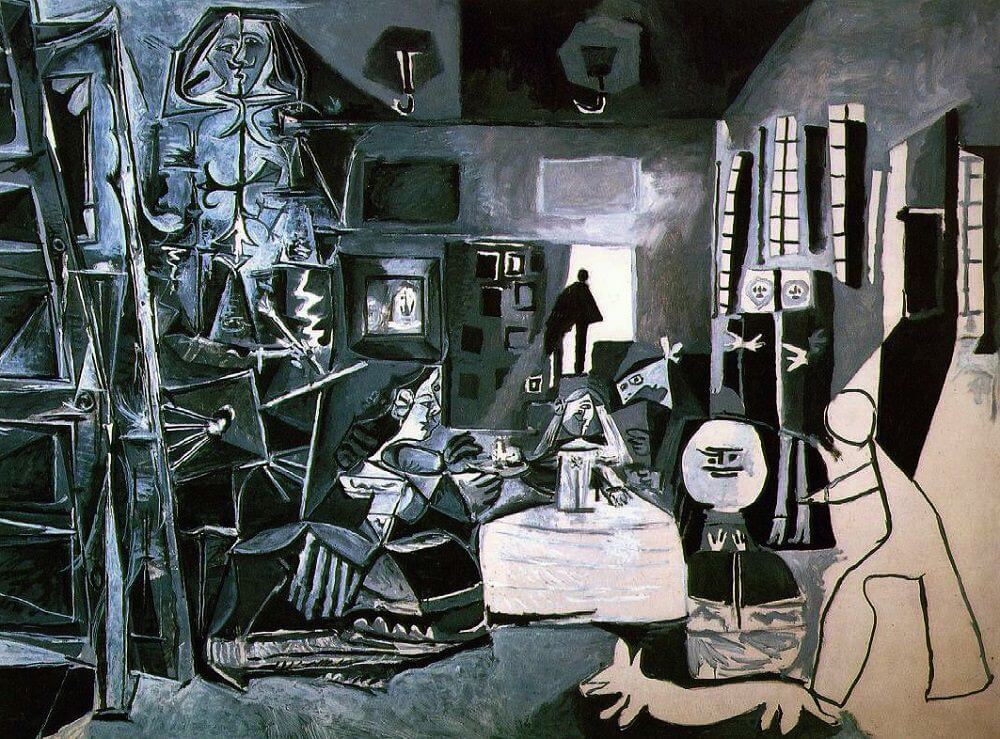
One of his projects was to look at old masterpieces by other artists, such as the Spanish painter Velazquez, and translate the paintings into his own style. Picasso seemed to be trying to understand the history of art by redoing it in his own way.
Conclusion
By now , Pablo Picasso was an international celebrity.
He and Jacqueline moved to a secluded villa in the hills of southern France. His villa had electronic gates and guard dogs. Even his own children had trouble getting in to see him.
And still Picasso kept working. Even at ninety-one he was experimenting. He started making linoleum block print.
He also made a new kind of sculpture with painted sheet metal. He would still turn out three, four, or even five paintings a day!
However, on April 8, 1973, Pablo Picasso’s heart finally gave up.
Disclaimer: All recommendations are impartial and based on user experience, with no bias to the products or the brand. The products in this post may contain affiliate links.
